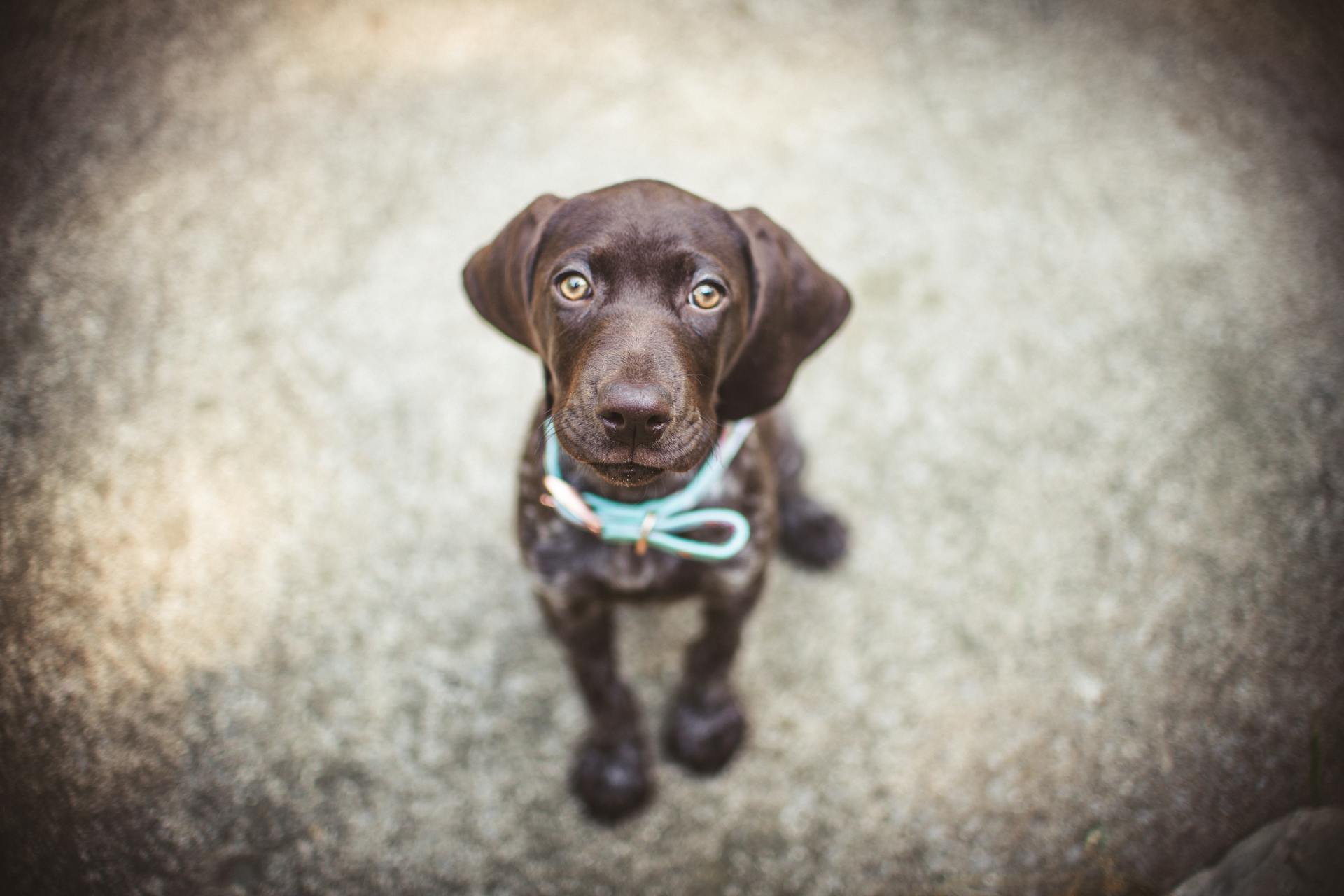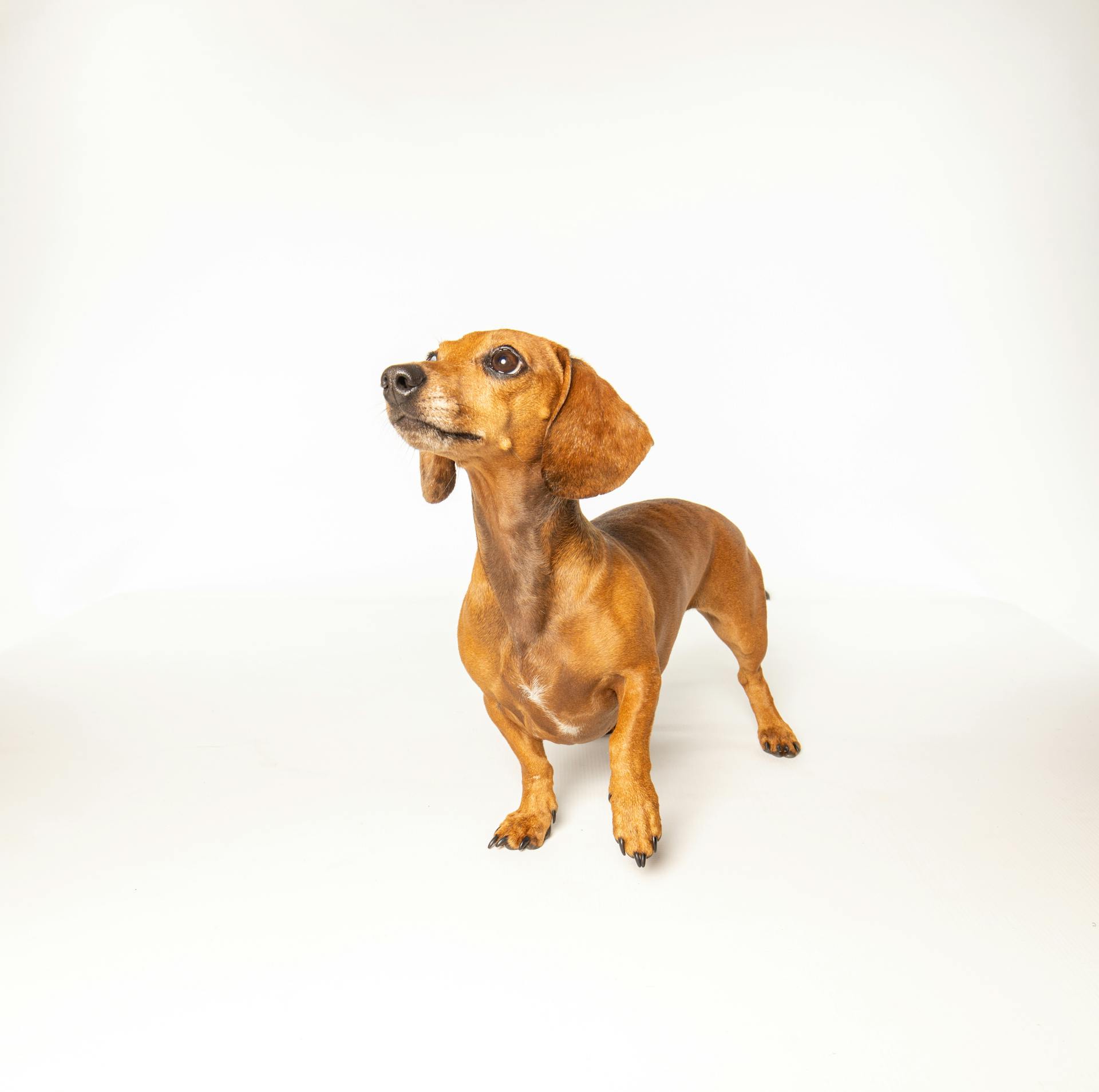
Welcoming a new dachshund puppy into your family is a thrilling experience, but it's essential to be prepared for the responsibilities that come with it. Dachshunds are prone to obesity, so it's crucial to monitor their food intake and ensure they get regular exercise.
Dachshunds are short-legged dogs that require daily walks to maintain their physical and mental health. A 30-minute walk per day is recommended to keep them happy and healthy.
As a breed, dachshunds are known for their loyalty and affection towards their owners. They thrive on attention and interaction, so be prepared to spend quality time with your furry friend.
Physical Characteristics
Dachshunds are small hunting hounds that stand much longer than they do tall, making them a unique and recognizable breed.
Their short and stout form is one of their most distinctive features, and they come in three coat types: smooth, longhair, and wirehair.
Smooth dachshunds have a short, shiny coat that comes in a variety of colors and patterns, including solid red or cream, black and tan, and dappled.
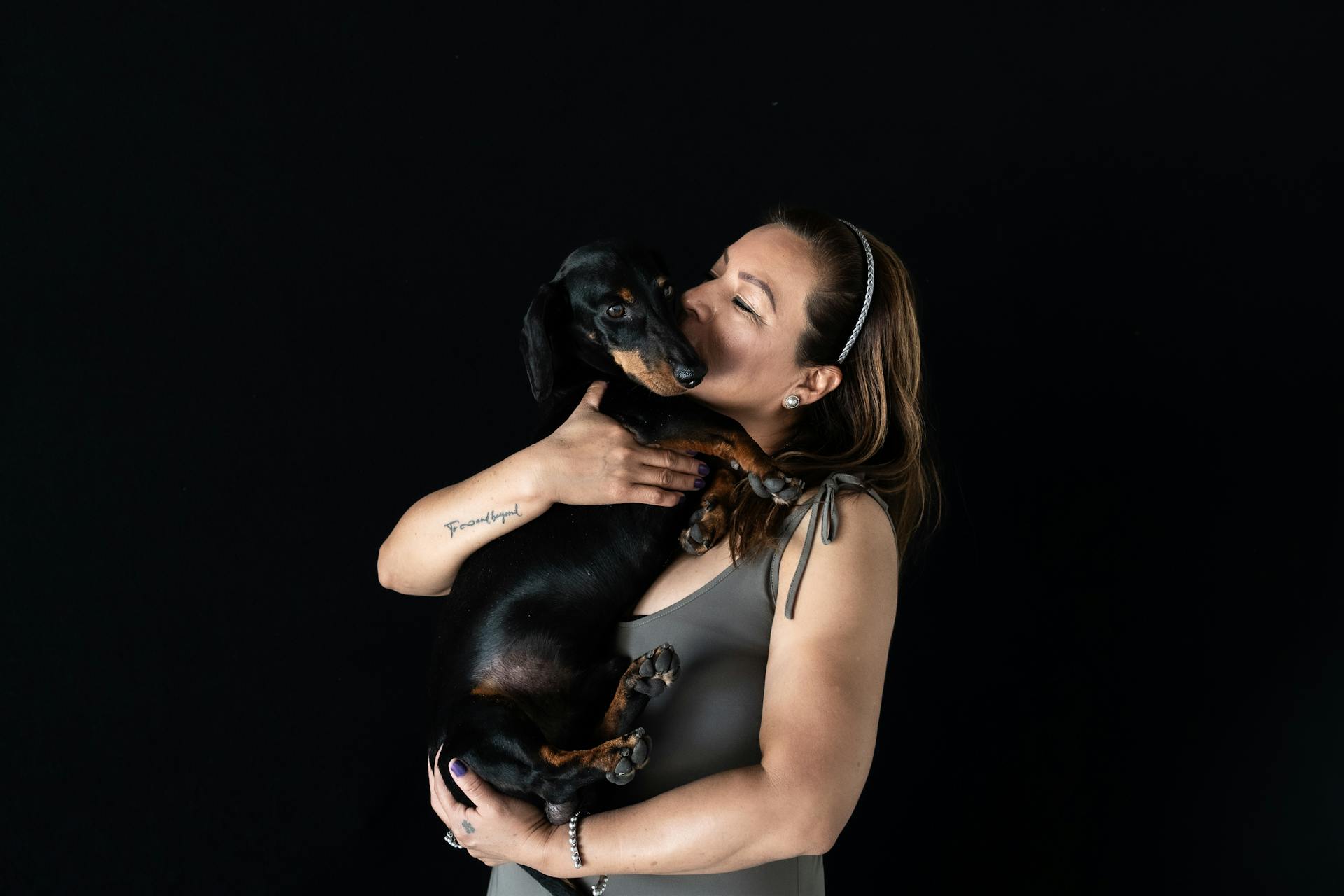
Wirehaired dachshunds have a soft undercoat overlayed by a short, thick, and hard top coat with a wiry texture, and they typically come in wild boar, black and tan, and various shades of red.
Longhaired dachshunds have sleek, shiny, often wavy hair that's longer on the ears and under the neck, body, and behind the legs, and they come in all the same colors as the smooths.
Size
Dachshunds come in two main sizes: Standard and Miniature. Standard Dachshunds typically weigh between 16 and 32 pounds.
The Miniature variety weighs 11 pounds and under at maturity. Some Dachshunds fall into a middle weight range, called Tweenies, which is not an official classification but isn't penalized in the show ring.
Appearance
The dachshund is a small hunting hound with a big personality, bred in Germany to burrow into the dens of prey. They stand much longer than they do tall.
Their coat comes in three types: smooth, longhair, and wirehair, each with its own unique characteristics. The smooth dachshund has a short, shiny coat in a variety of colors and patterns, including solid red or cream, black and tan, and dappled.
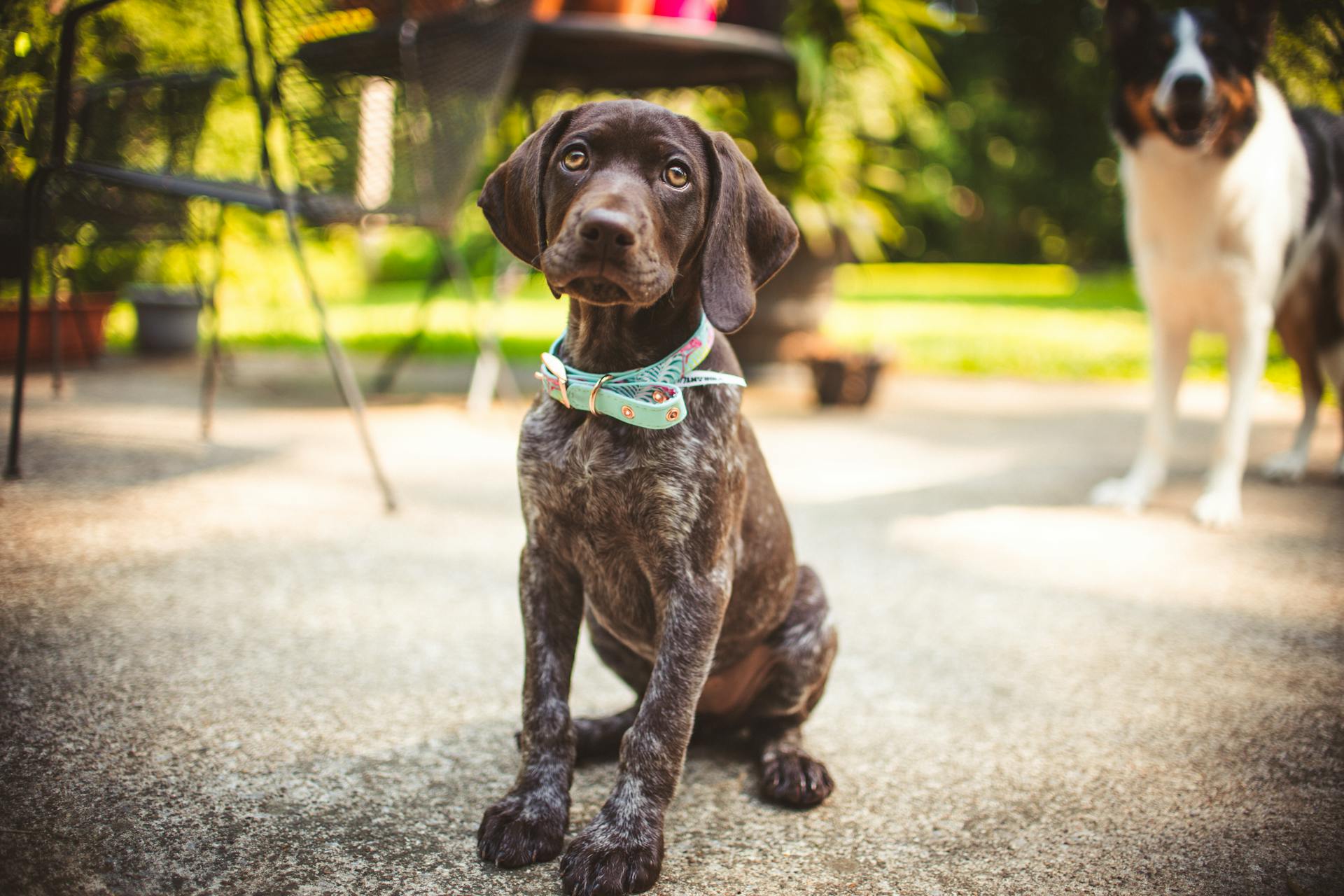
Wirehaired dachshunds have a soft undercoat overlayed by a short, thick, and hard top coat with a wiry texture. They also have a prominent beard and eyebrows.
Longhaired dachshunds have sleek, shiny, often wavy hair that's longer on the ears and under the neck, body, and behind the legs. They come in all the same colors as the smooth dachshunds.
The color of a dachshund's eyes varies based on their coat color and pattern. Solid- and bicolor-coated smooth dachshunds typically have dark eyes, while dapple dachshunds tend to have partially or wholly blue eyes.
Dachshunds come in two sizes: standard and mini.
Personality and Temperament
Dachshunds are clever, lively, and courageous to the point of rashness, making them entertaining and fearless companions.
Their breed history as ferocious hunters has left them with a braveness and spunk that's hard to ignore. They were bred to hunt badgers, after all!
Dachshunds are known to be stubborn, but with patience and consistency, they can take to obedience training quite well. It's essential to remember that they're not suited for guard dog work.

Their playful nature means they need regular exercise to stay fit and build strong muscles to support their back. Multiple daily walks, playtime, and activities will keep them happy and healthy.
As social animals, Dachshunds need early socialization, exposure to many different people, sights, sounds, and experiences when they're young. Enrolling them in puppy kindergarten class is a great start.
Their spunky temperament means playtime with children should be supervised, as they may play too rough for young kids. Children must also be taught how to interact with dogs.
Dachshunds can be nervous or shy, but this isn't correct for the breed. Avoid puppies that show these characteristics, and choose the middle-of-the-road puppy instead.
Their barking nature makes them great watchdogs, but you'll have to make an effort to shape their behavior appropriately. With proper training and socialization, they'll be a loving and loyal companion.
Health
A dachshund's lifespan is about average for a smaller dog breed, ranging from 12-16 years.

Dachshunds are prone to back ailments due to their long spine, muscular and bowed legs, and low-to-the-ground stature. This is a common health issue in the breed.
Their floppy ears are also prone to infection, so it's essential to follow your vet's guidelines for proper and frequent ear evaluations.
Dachshunds can be susceptible to obesity, which can lead to serious back problems in this long breed. They should stick to a strict diet and ensure proper daily exercise.
Regular check-ups with your vet can help identify potential health issues early on.
The Dachshund Club of America recommends breeders complete thorough cardiac, patella, and eye exams to ensure the health of the puppies.
It's crucial to purchase all dogs from reputable breeders who will introduce you to the dog's parents and siblings. This can give you a better understanding of the puppy's potential health risks.
Dachshunds can live a long and healthy life with proper care and attention.
Explore further: Dog Joint Health
Care and Feeding
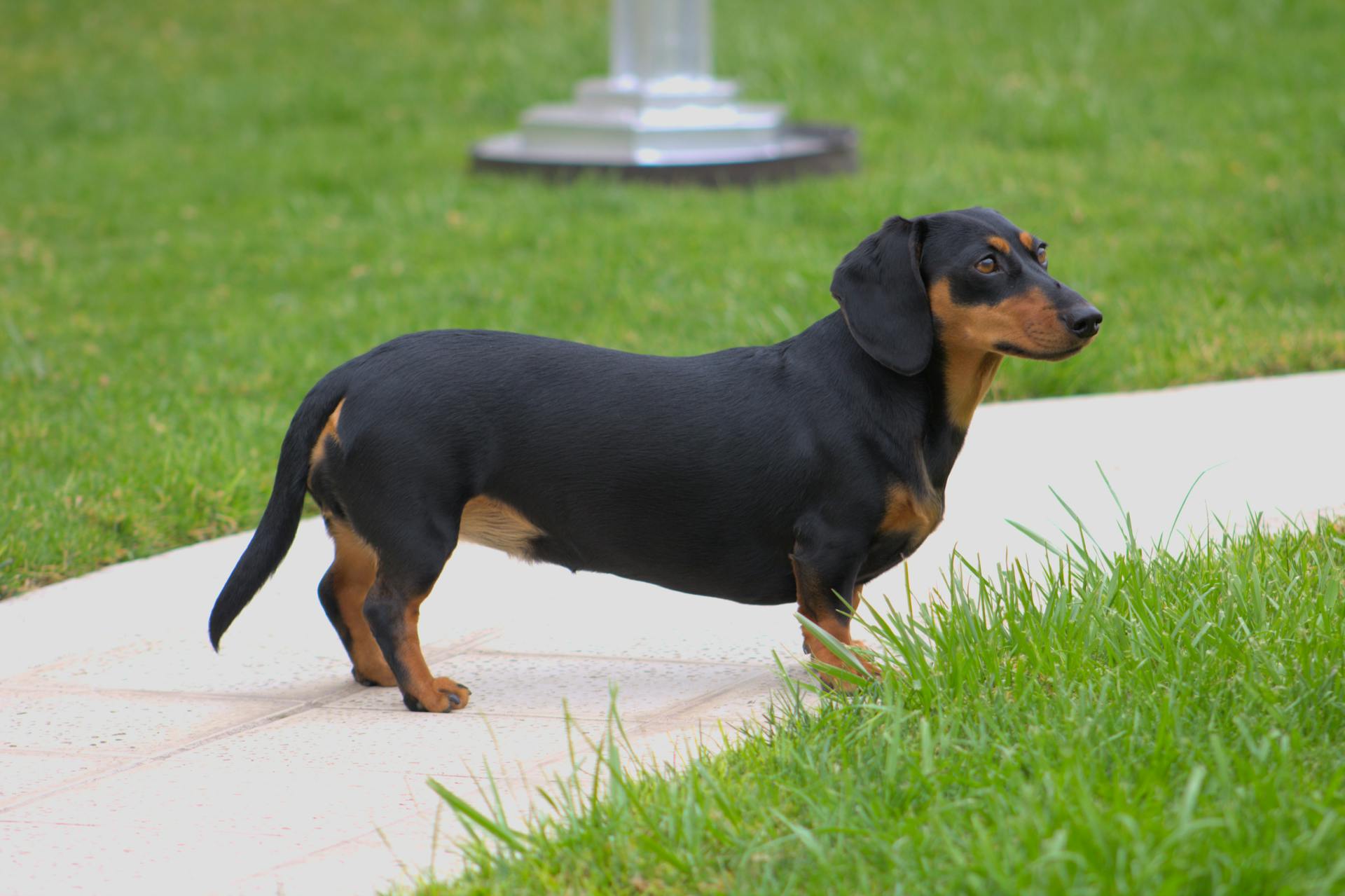
Dachshunds need regular exercise to stay happy and healthy. Two half-mile walks a day, about 10 minutes each, is a good starting point.
To prevent back injuries, get a ramp or steps for your Dachshund to use when jumping on and off furniture. Always support their rear and chest when holding them.
A moderate amount of exercise, combined with a balanced diet, will help your Dachshund maintain a healthy weight. Overfeeding can lead to obesity, which increases the risk of back injuries.
Here are some general guidelines for feeding your Dachshund:
Remember to choose a high-quality dog food that meets your Dachshund's nutritional needs. You can consult with your veterinarian to determine the best diet for your dog.
Feeding
Feeding your Dachshund is a crucial part of their care, and it's essential to get it right. A good quality dog food is the foundation of a healthy diet, and you should aim to feed your Dachshund 1/2 to 1 1/2 cups of high-quality dry food a day.
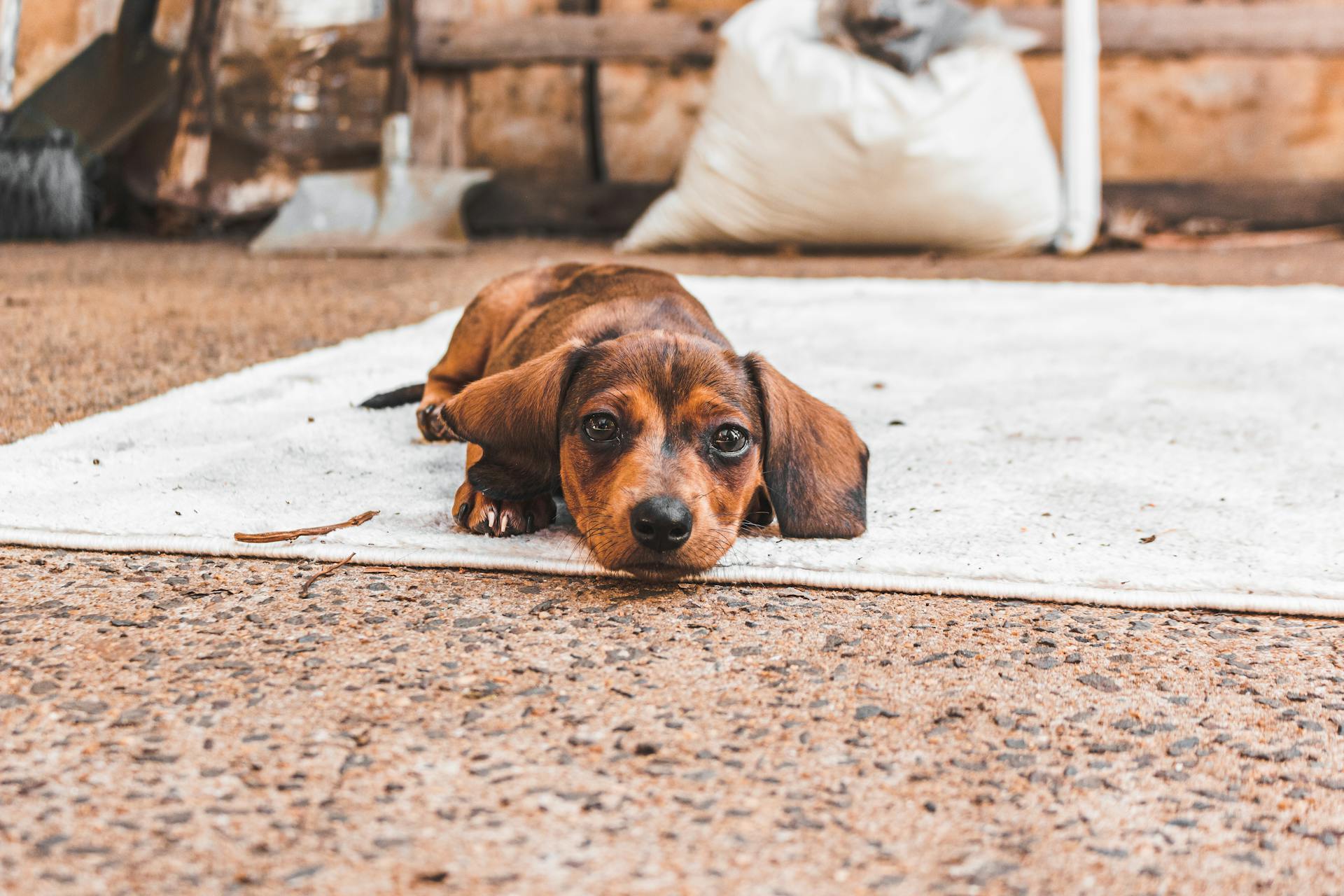
The amount of food your Dachshund needs will depend on their size, age, build, metabolism, and activity level. This means that a highly active dog will need more food than a couch potato dog. You should also consider the quality of the dog food you buy, as a better quality food will go further in nourishing your dog.
Avoid feeding your Dachshund table scraps and animal bones, as they can cause serious health problems like vomiting, diarrhea, and gastrointestinal obstruction. Many human foods also have a high fat content, which can lead to complications like pancreatitis.
Dachshund puppies need to be fed three to four times a day, while adult dogs should be fed twice a day. Diets formulated for small breeds are a good fit for Dachshunds, as they have a smaller kibble size that's easier to chew.
To determine how much to feed your Dachshund, you should consult your veterinarian and the feeding instructions on the bag of food. Overfeeding can lead to weight gain and increase the risk of back injuries and disease.
Here are some nutritional tips to keep in mind:
- Feed your Dachshund an AAFCO-approved diet to ensure they receive all the necessary nutrients.
- Consider adding dietary supplements like glucosamine, chondroitin, and MSM to support joint health.
- Omega-3 fatty acids, found in fish oil, can help promote healthy skin and coat.
- Certain antioxidants and vitamins may help reduce stress on the eye and delay cataract development.
Pet Care Considerations

Dachshunds require regular exercise to stay fit and build strong muscles to support their long back, which is vulnerable to injury. They need at least two half-mile walks a day, about 10 minutes each, to keep them happy and healthy.
You should also consider installing pet stairs or ramps near furniture and beds to limit their jumping and prevent back injuries. This will help keep your Dachshund safe and sound.
As a breed, Dachshunds are prone to back injuries, so it's essential to take precautions to support their back health. Keeping them at a healthy weight is also crucial to minimize the risk of a back injury.
Dachshunds are people dogs and shouldn't spend their lives locked up in a crate or kennel. They need interaction and attention from their owners to thrive.
You'll need to put in some training to redirect barking behaviors, as Dachshunds can be quite vocal dogs. Consistent training and mental stimulation are also essential to build good behavior and prevent destructive habits.
For your interest: How to Prevent Ivdd in Dachshunds
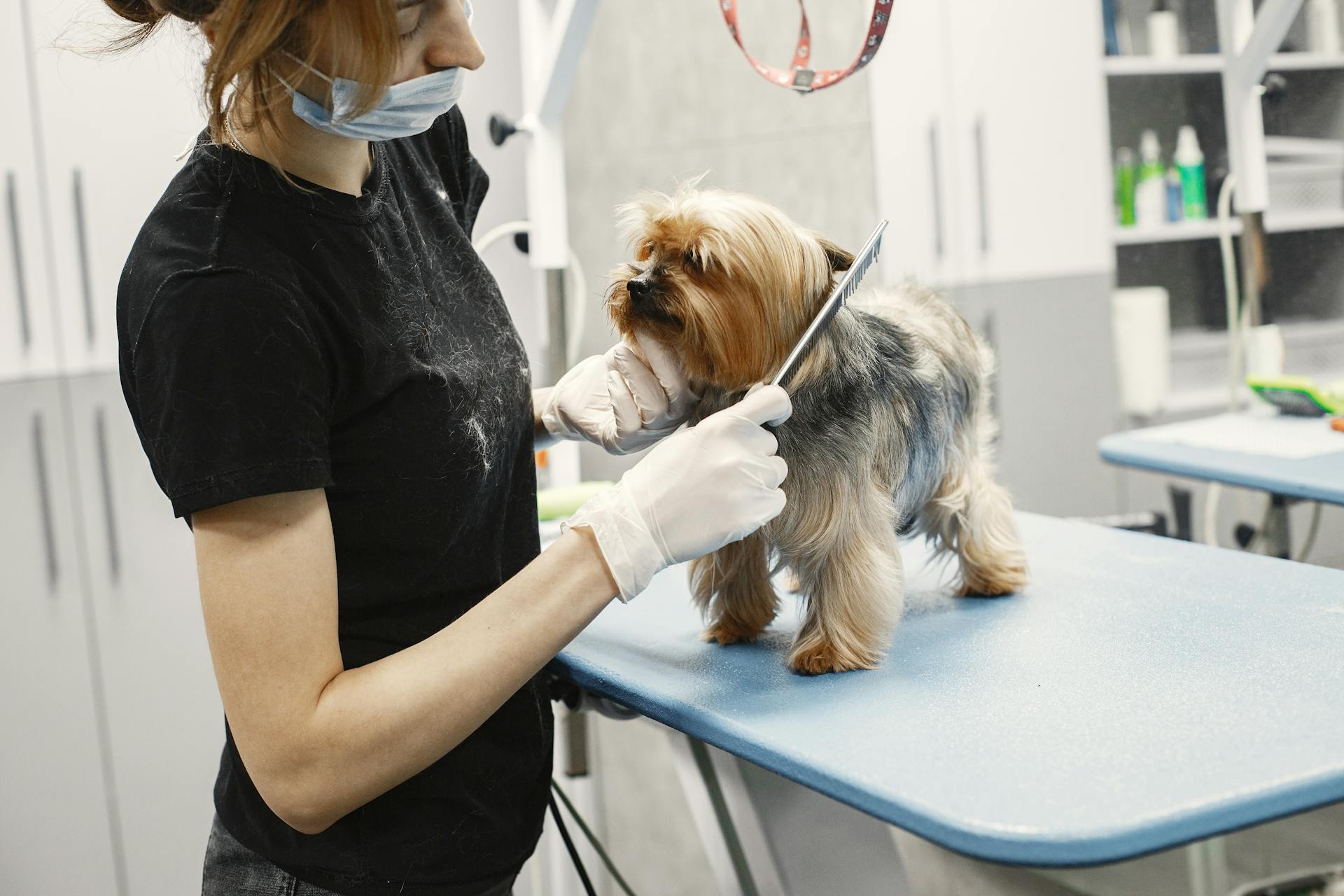
Regular grooming is also a must for Dachshunds, depending on their coat variety. Smooth-coated Dachshunds are low maintenance, but longhaired Dachshunds need more frequent brushing to prevent matting. Wirehaired Dachshunds require the most maintenance, including weekly brushing and trimming of their beard and eyebrows.
Dachshunds are eager to learn obedience training, but it's essential to keep things positive and fun. Food can be a great motivator, but you can also use toys as rewards to tap into their predatory instincts.
By following these pet care considerations, you'll be well on your way to raising a happy, healthy, and well-behaved Dachshund.
Here's an interesting read: Are Dachshunds High Maintenance
Grooming and Maintenance
Dachshunds can have three different coat types: Longhaired, Smooth, and Wirehaired.
Longhaired Dachshunds have a thick coat that sheds regularly, so they need frequent brushing to prevent mats and tangles. They should be brushed out completely every day.
Smooth-coated Dachshunds are very low maintenance, requiring little more than a wipe-down with a towel or a quick brushing once a week.
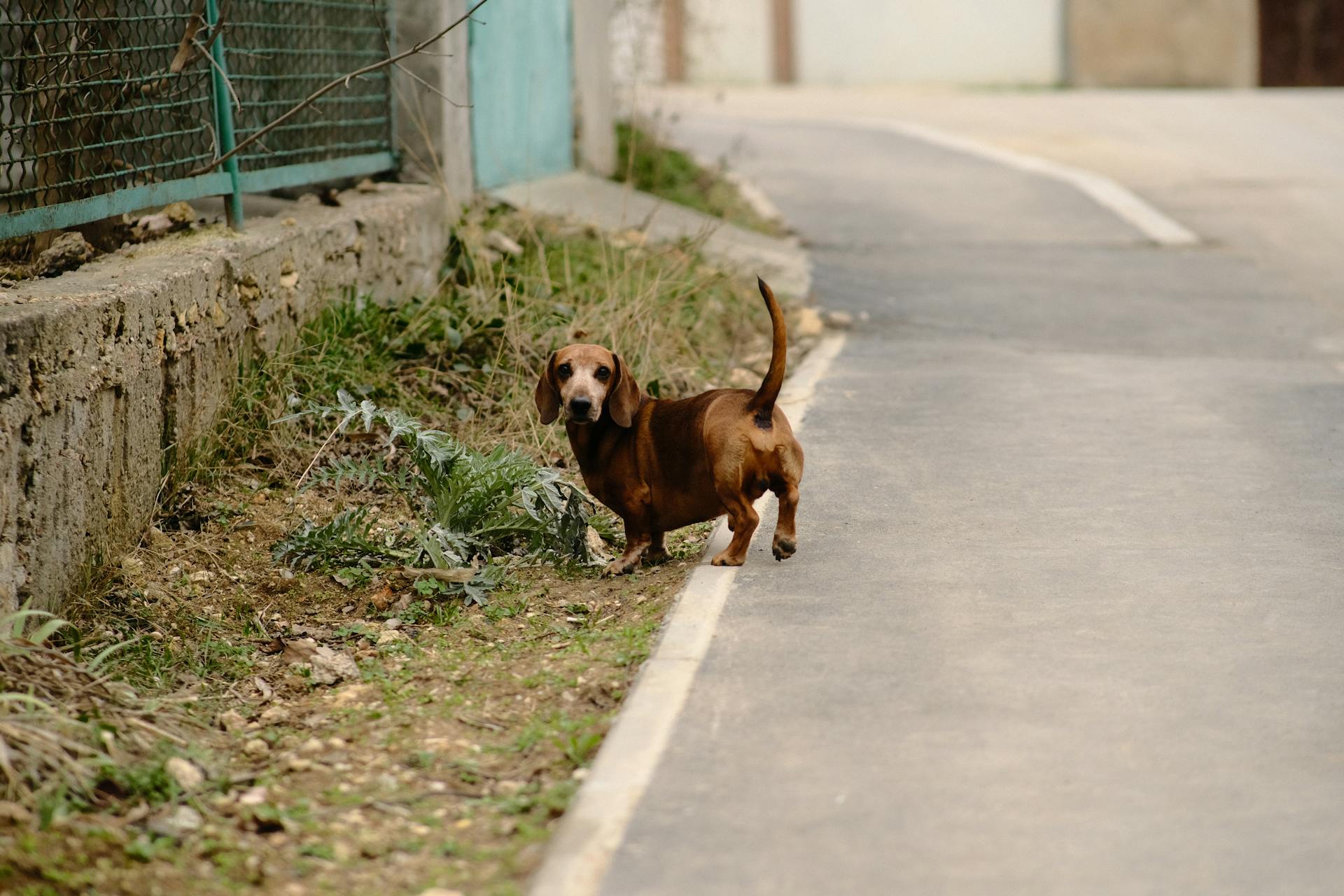
Wirehaired Dachshunds need their coats hand-stripped a few times per year, and they also need weekly brushing and sometimes a quick trim.
All Dachshunds should be bathed sparingly, no more than once a month, as their sensitive skin can dry out if bathed too frequently.
Regular brushing is a good time to check for things like coat sheen, nail length, and ear and dental health.
Here's a quick breakdown of the grooming needs for each coat type:
Dachshunds will require extra weekly care to their ears, as their floppy shape can prevent proper air circulation and lead to infections.
Living with a Dachshund
Dachshunds can be great companion pets for people in smaller homes or apartments, but they do require regular walks and playtime to stay happy and healthy.
They are quite vocal dogs, so be prepared to put in some training to redirect barking behaviors. Consistent training is key to building good behavior in this smart and rambunctious breed.
Obesity is a major concern for Dachshunds, as it can make them more at risk for back injuries. To keep your Dachshund healthy, make sure to provide a balanced diet and plenty of exercise.
Owning a Pet
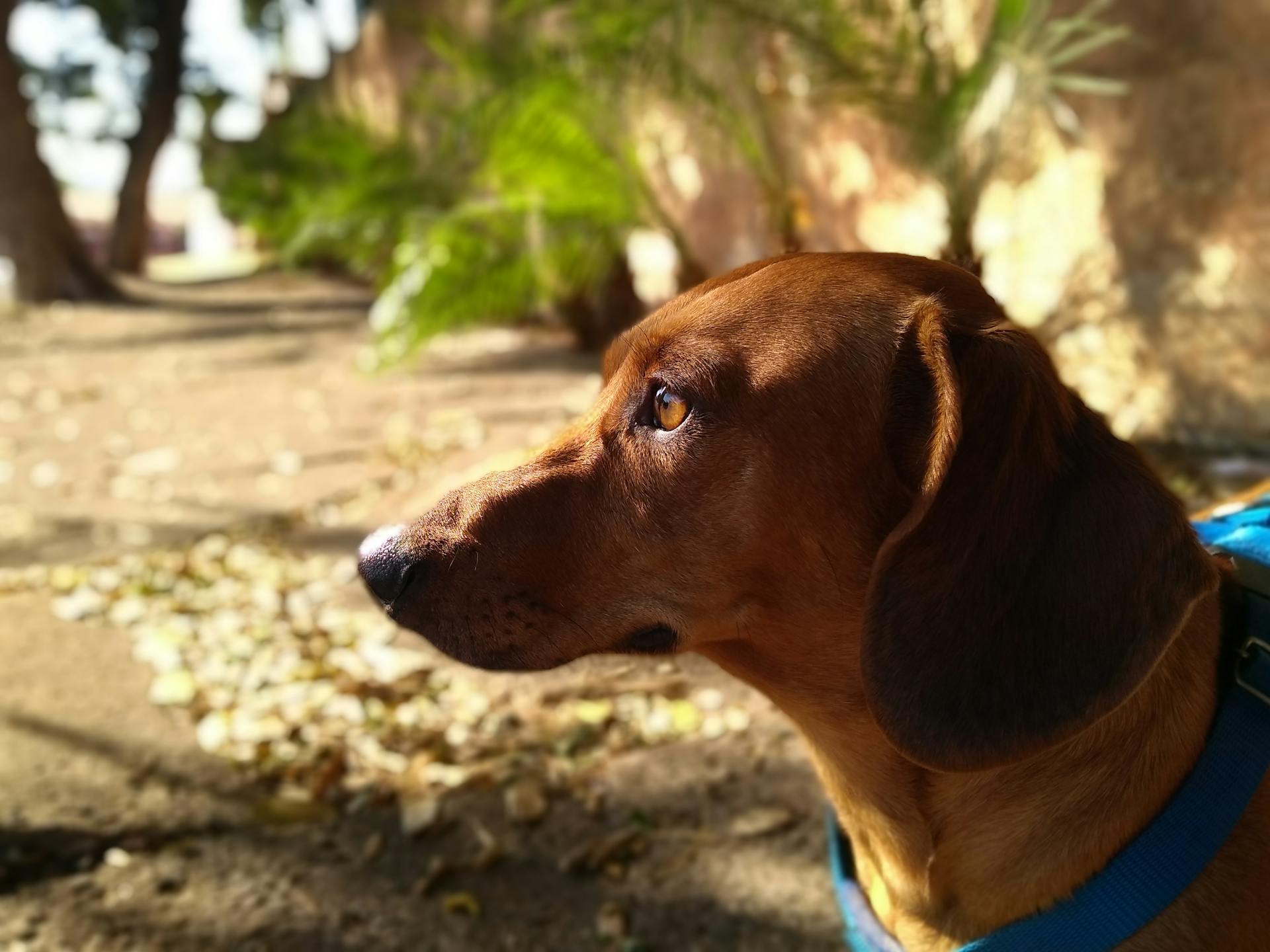
Living with a Dachshund can be a wonderful experience, but it's essential to be aware of their unique needs and characteristics.
Dachshunds are smart dogs, but they can be independent and willful, making them a challenge to train.
To overcome this, use positive reinforcement during training and keep sessions short. If they lose patience, take a break and continue later.
Consistent socialization from an early age is crucial to help them become confident and well-behaved dogs.
In fact, Dachshund puppies must be socialized consistently when young to learn good manners and avoid barking or chasing inappropriately.
Dachshunds are great companion pets for people in smaller homes or apartments, as long as they get enough exercise and stimulation through walks and play every day.
However, they can be quite vocal, so be prepared to put in some training to redirect barking behaviors.
It's also essential to take precautions to support their back health, as they are susceptible to back injuries.
You might like: Dachshunds Barking Sounds
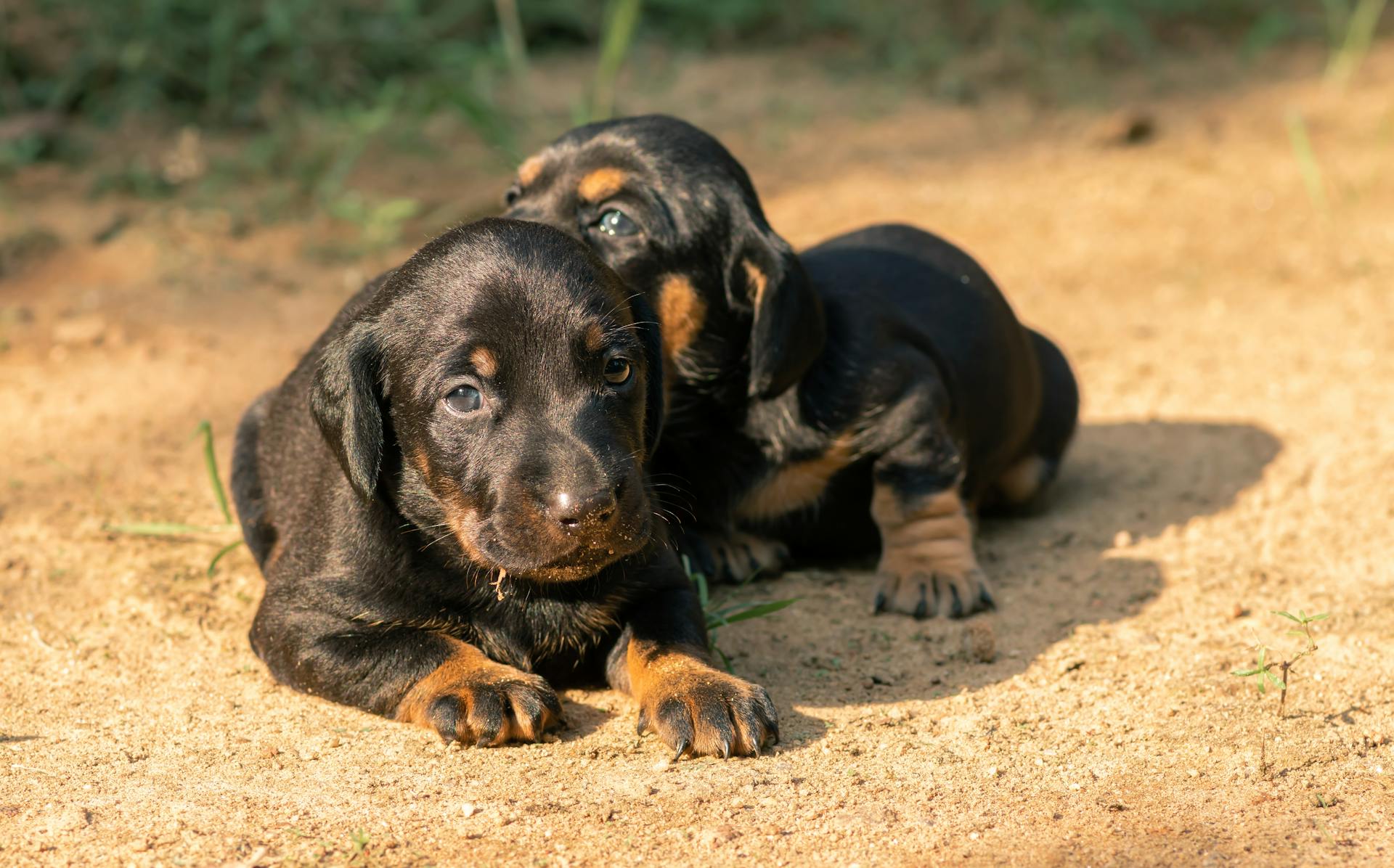
Keeping your Dachshund at a healthy weight is vital to prevent obesity, which can increase the risk of back injuries.
Mental stimulation and consistent training are key to building good behavior in this rambunctious and smart dog breed.
With the right care and attention, owning a Dachshund can be a incredibly rewarding experience.
Children and Pets
Living with a Dachshund means being mindful of how they interact with children and other pets.
Dachshunds are good with children in their own family if introduced to them early, but it's essential to supervise playtime, especially with children's friends.
Supervise any interactions between dogs and young children to prevent biting or ear or tail pulling on either party.
Teach your child never to approach any dog while he's sleeping or eating, and never try to take the dog's food away.
Dachshunds get along well with other pets, especially if they're introduced to them in puppyhood, but their bold personalities can lead to conflicts.
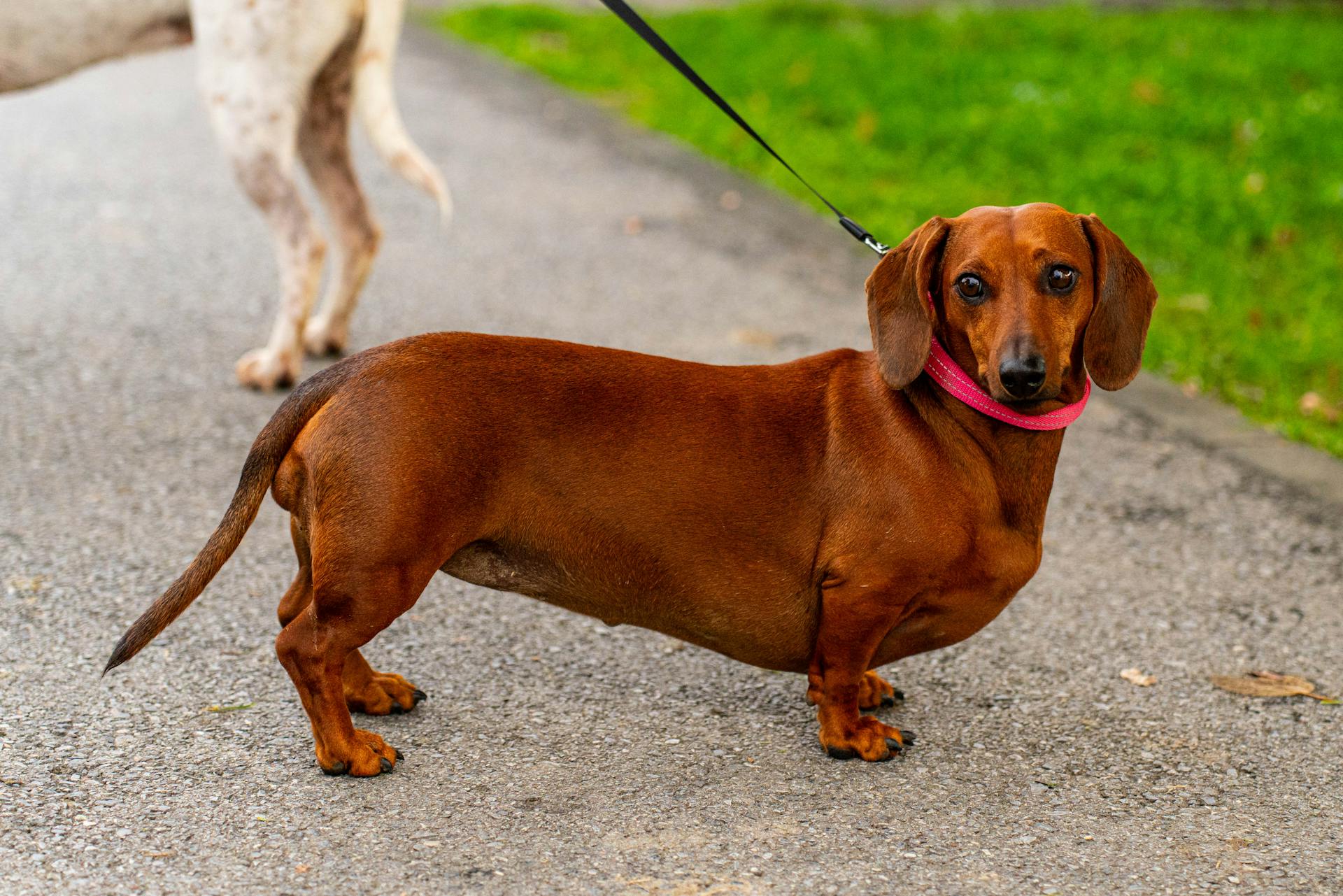
To prevent conflicts, introduce your Dachshund to other dogs and pets properly, and supervise their interactions.
If you have a cat, early socialization and pairing the dog with a cat who's comfortable with canine friends can help with the Dachshund's tendency to chase cats.
However, keep birds and small exotic pets separated from Dachshunds to avoid predator stress or worse.
With proper socialization and supervision, Dachshunds can enjoy having a dog companion and even learn to live with cats.
Frequently Asked Questions
What are the pros and cons of Dachshunds?
Dachshunds make loyal and affectionate companions, but their high energy and strong prey drive can be challenging for some owners. They require careful consideration and a suitable lifestyle to thrive
Featured Images: pexels.com
